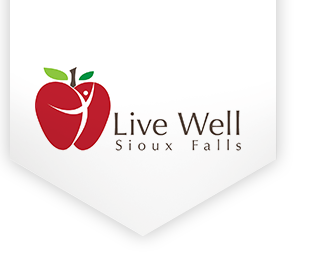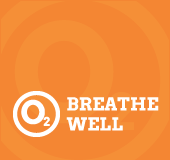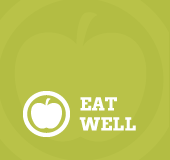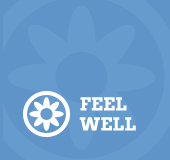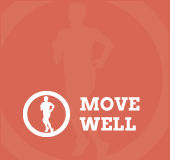Nutrition Guidelines
A healthy diet is low in saturated fat, trans fats, cholesterol, salt (sodium) and added sugar.
Food choices should include:
Fruits and vegetables
Fat-free or low-fat milk and milk products
Lean meats, poultry, fish, beans, eggs and nuts
You can use this tool below from the U.S. Department of Agriculture to see a plan customized for you based on the MyPlate approach. Please note: People with a chronic health condition should talk to a healthcare provider about a nutrition plan that is right for them.
How Can Fruits Help Me Live Well?
 Eating fruit is good for your health! People who eat fruits and vegetables as part of a healthy diet may reduce their risk for chronic diseases.
Eating fruit is good for your health! People who eat fruits and vegetables as part of a healthy diet may reduce their risk for chronic diseases.
The fruit group includes any whole fruit or 100% fruit juice. Fruits may be fresh, frozen, canned or dried. You should fill half your plate with fruits and vegetables at each meal, trying to get five servings of fruits and vegetables each day.
Here are just some of the benefits of eating fruits:
- Eating a diet rich in vegetables and fruits may reduce risk for heart disease, certain types of cancers and type 2 diabetes.
- Most fruits are low in fat, sodium, and calories.
- Fruits are sources of many vitamins and minerals like vitamin C, potassium and folate (folic acid). Vitamin C is important for healing and keeps teeth and gums healthy. Potassium can help reduce blood pressure. Folate (folic acid) is especially important for women who may become pregnant because it can help during fetal development.
- Dietary fiber from fruits helps reduce blood cholesterol levels and may lower risk of heart disease. Fiber also helps reduce constipation.
How Can Vegetables Help Me Live Well?
 The vegetable group includes any vegetable or 100% vegetable juice. Vegetables may be raw or cooked, fresh, frozen, canned
The vegetable group includes any vegetable or 100% vegetable juice. Vegetables may be raw or cooked, fresh, frozen, canned
or dried/dehydrated.
Vegetables are usually organized into these groups: dark green vegetables, starchy vegetables, red and orange vegetables, beans and peas and other vegetables.
Try to get five servings of fruits and vegetables each day, and fill half your plate with these foods at each meal. People who eat fruits and vegetables as part of an overall healthy diet may reduce their risk for chronic diseases.
The benefits of eating vegetables include:
- Eating a diet rich in vegetables and fruits may reduce r#Topisk for heart disease, certain types of cancers and type 2 diabetes.
- Most vegetables are naturally low in fat, sodium and calories. Remember: sauces or seasonings may add fat, calories, or cholesterol.
- Vegetables are important sources of many vitamins and minerals including potassium, folate (folic acid), vitamin A and vitamin C. Potassium may help maintain healthy blood pressure. Vitamin A keeps eyes and skin healthy and helps protect against infections, and vitamin C is important for healing and keeps teeth and gums healthy. Potassium can help reduce blood pressure. Folate (folic acid) is especially important for women who may become pregnant because it can help during fetal development.
- Dietary fiber from vegetables helps reduce blood cholesterol, may lower risk of heart disease and also helps reduce constipation.
How Can Whole Grains Help Me Live Well?
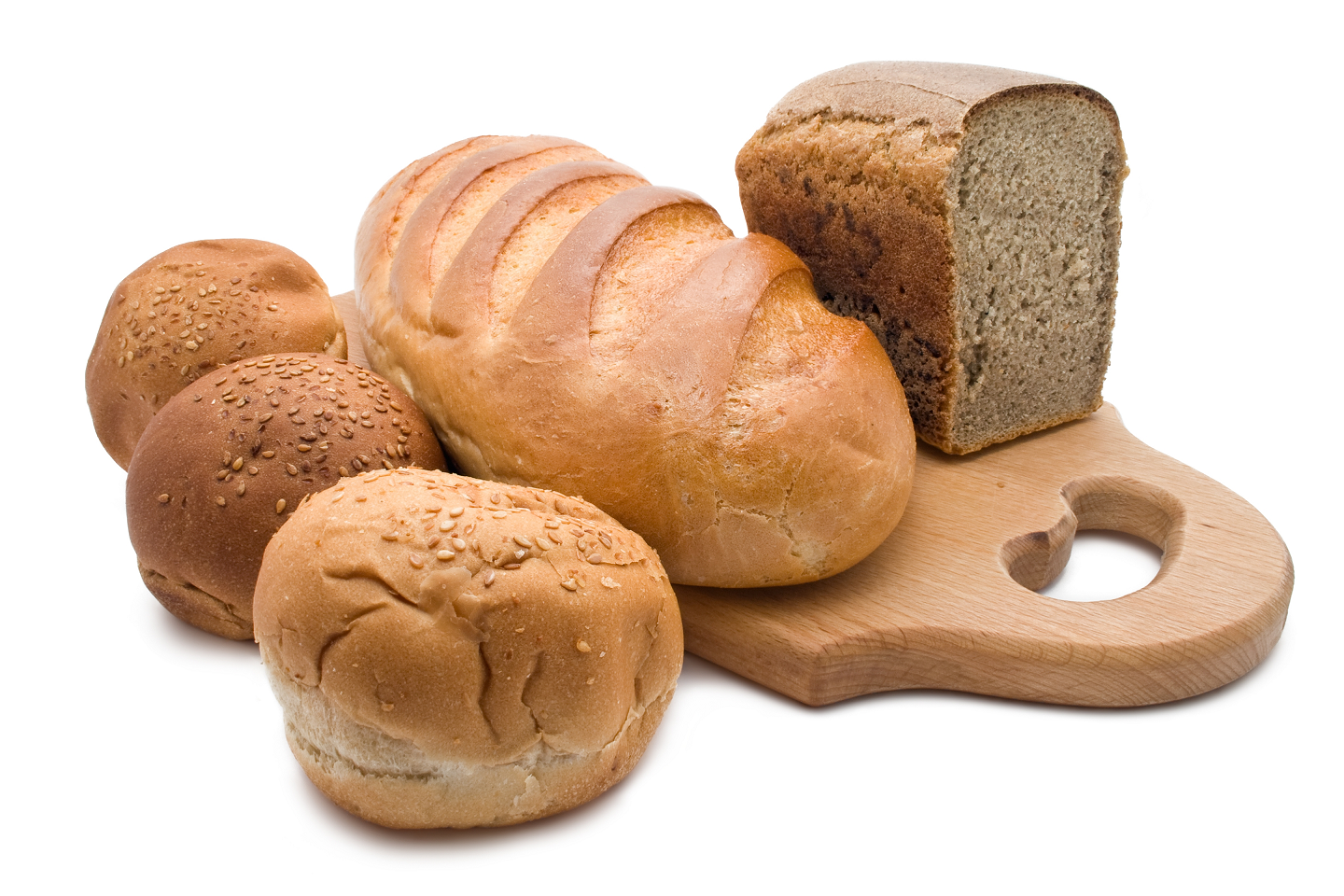
Eating grains, especially whole grains, provides many nutrients that are vital for our health.
Grains include wheat, rice, oats, cornmeal, barley or another cereal grain. Bread, pasta, oatmeal, breakfast cereals, and tortillas are examples of grain products.
Grains are divided in two groups: Whole Grains and Refined Grains.
- Whole grains include: whole-wheat flour, bulgur (cracked wheat), oatmeal, whole cornmeal, brown rice
- Refined grains have been milled, a process that removes the bran and germ. This gives grains a finer texture, but it also removes dietary fiber, iron, and many B vitamins.
Examples of refined grains: white flour, white bread, white rice.
Most refined grains are enriched, which means certain B vitamins (thiamin, riboflavin, niacin, folic acid) and iron are added. Check the ingredient list on refined grains to make sure the word "enriched" is included.
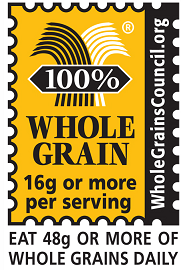
Try to choose whole grains over refined grains. Look for this yellow "100% Whole Grain" stamp on food packages.
The benefits of whole grains include: nutrients like fiber, B vitamins (thiamin, riboflavin, niacin, and folate), and minerals (iron, magnesium and selenium). The B vitamins help with metabolism, where the body releases energy from protein, fat, and carbohydrates. Magnesium helps build bones and releases energy from muscles. Selenium is important for a healthy immune system.
The fiber in whole grains may reduce constipation, reduce blood cholesterol and lower the risk of heart disease, obesity and type 2 diabetes.
Eating grains fortified with folate before and during pregnancy helps fetal development.
How Can Dairy Help Me Live Well?
 Milk products and many foods made from milk are considered part of the dairy group. Most choices from this group should be fat-free or low-fat.
Milk products and many foods made from milk are considered part of the dairy group. Most choices from this group should be fat-free or low-fat.
The one benefit most of us know about is that the calcium in dairy can help improve bone health and reduce risk of osteoporosis. Here are some other benefits:
- Consuming fat-free or low-fat dairy products may help reduce the risk of heart disease and type 2 diabetes.
- Diets rich in potassium may help maintain healthy blood pressure. You can find potassium in dairy products like yogurt and milk.
- Vitamin D helps maintain proper levels of calcium and phosphorous, which helps build and maintain bones. Choose milk fortified with vitamin D.
Other sources include vitamin D-fortified yogurt and vitamin D-fortified breakfast cereals. - Milk products that are low-fat or fat-free provide little or no solid fat. This is good because dairy foods like milk or cheese that are high in saturated fats and cholesterol
can increase your risk for heart disease. Limit the amount of “whole dairy” foods you eat.
How Can Proteins Help Me Live Well?
 The proteins group includes foods made from meat, poultry, seafood, beans and peas (also called legumes), eggs, processed soy products, nuts, and seeds are considered part of the protein group.
The proteins group includes foods made from meat, poultry, seafood, beans and peas (also called legumes), eggs, processed soy products, nuts, and seeds are considered part of the protein group.
Beans and peas, or legumes, are also part of the vegetable group. Many people eating a vegetarian diet consider legumes as an alternative to meat, as they are sources of plant protein. They are also sources of iron, zinc, dietary fiber, folate and potassium.
Select a variety of lean or low-fat foods from the protein group, including at least 8 ounces of cooked seafood per week. Vegetarian options in the protein proup include beans and peas, processed soy products, and nuts and seeds.
Benefits of foods in the meat, poultry, fish, eggs, nuts, and seeds group:
- Foods in the protein group contain B vitamins (niacin, thiamin, riboflavin, and B6), vitamin E, iron, zinc, and magnesium. Iron carries oxygen in the blood, magnesium helps build bones and zinc helps the immune system.
- Proteins are building blocks for bones, muscles, cartilage, skin, and blood.
- Seafood contains EPA and DHA, which are omega-3 fatty acids. Eating 8 ounces per week of seafood may help reduce heart disease risk. Seafood varieties commonly consumed in the United States that are higher in EPA and DHA and lower in mercury include salmon, anchovies, herring, sardines, Pacific oysters, trout, and Atlantic and Pacific mackerel (not king mackerel, which is high in mercury).
- Diets high in saturated fats raise “bad” cholesterol (LDL) in the blood. Having high LDL cholesterol increases the risk for heart disease. Some foods high in saturated fat include fatty cuts of beef, pork, and lamb; regular (75% to 85% lean) ground beef; regular sausages, hot dogs, and bacon; some luncheon meats such as regular bologna and salami; and some poultry such as duck. To help keep blood cholesterol levels healthy, limit the amount of these foods you eat.
- Diets high in cholesterol can also raise LDL cholesterol. Cholesterol is found in foods from animal sources. Some foods high in cholesterol include egg yolks (egg-yolks are cholesterol-free) and organ meats such as liver. To help keep blood cholesterol levels healthy, limit the amount of these foods you eat.
- Eating peanuts and certain tree nuts like almonds, walnuts and pistachios may reduce the risk of heart disease when consumed as part of a healthy diet. These foods can be high in calories, though, so eat them in small portions. To reduce sodium intake, choose unsalted nuts and seeds.
What Do You H2Know? The Benefits of Staying Hydrated.
Agua. H2O. Water. No matter how you say it, the fact is that you need it! Did you know that water makes up approximately 70% of a human's body weight? Water is essential for nearly every function in the body and has many benefits – from assisting with digestion and regulating body temperature to boosting memory and mood. Adults should drink at least 64 ounces of water a day. If it is a warm day, or if you are participating in high-intensity physical activity, you may need more.
While drinking water is the best way to hydrate your body, you can also supplement water with fruits and vegetables containing water, such as watermelon (which is 90% water!), oranges and grapefruit. Although veggies are not as full of water, you can still get a nutrient-rich water boost from celery, cucumbers, tomatoes, and green peppers.
Take care with other beverages, however, as not all of them are hydrating. Sodas and sports drinks are often loaded with sugar, and consuming too many caffeinated or alcoholic beverages may actually dehydrate you.
Hydration Resources:
- The Hydration Pyramid - Fun guide to use with kids so they know what to drink and when.
- Daily Juice Recommendations - Reference for juice consumption by age.
Source: ChooseMyPlate.gov
